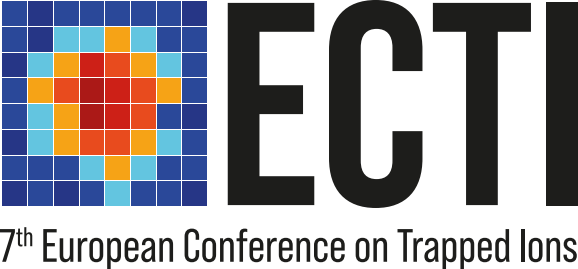The molecular hydrogen ion is the simplest molecule. This iconic system has been the subject of innumerous theoretical studies, from the earliest days of quantum mechanics [1] until today, culminating in highly precise predictions of its level energies [2]. Comparisons of these predictions and measured vibrational transition frequencies would offer excellent opportunities in fundamental physics that go beyond the results achieved with the related molecule [3, 4]: a direct determination of the proton-electron mass ratio and the proton's charge radius. Furthermore, achieving precision spectroscopy of is an essential prerequisite for a future CPT test that compares with its antimatter counterpart [5, 6].
In this work we report the first vibrational laser spectroscopy of , between low-lying rovibrational levels of para- [7]. We employed sympathetically laser-cooled and trapped ensembles. A first-overtone electric-quadrupole (E2) transition [8, 9] was driven by a unique -level optical frequency metrology system reliably delivering Watt-level laser power at 2.4m. Both hyperfine components were measured. We determined the spin-averaged rovibrational transition frequency with fractional uncertainty, finding agreement with the predicted value. By using as a test molecule, we also show that E2 spectroscopy is possible with uncertainty. This demonstrates that E2 transitions are suitable for precision spectroscopy of molecular ions and that determining spectroscopically with accuracy competitive with mass spectroscopy is a realistic prospect.
This work has received funding from the European Research Council (ERC) under the European Union’s Horizon 2020 research and innovation programme (grant agreement No. 786306, “PREMOL”).
[1] O. Burrau, Die Naturwiss. I., 16 (1927).
[2] V. I. Korobov and J.-P. Karr, Phys. Rev. A 104, 032806 (2021).
[3] M. Germann et al., Phys. Rev. Research 3, L022028 (2021).
[4] S. Alighanbari et al., Nat. Phys. 10.1038/s41567-023-02088-2 (2023).
[5] H. Dehmelt, Physica Scripta T59, 423 (1995).
[6] E. G. Myers, Phys. Rev. A 98, 010101 (2018).
[7] M. R. Schenkel et al., subm. (2023).
[8] M. Germann et al., Nat. Phys. 10, 820 (2014).
[9] V. I. Korobov et al., Phys. Rev. A 97, 032505 (2018).

